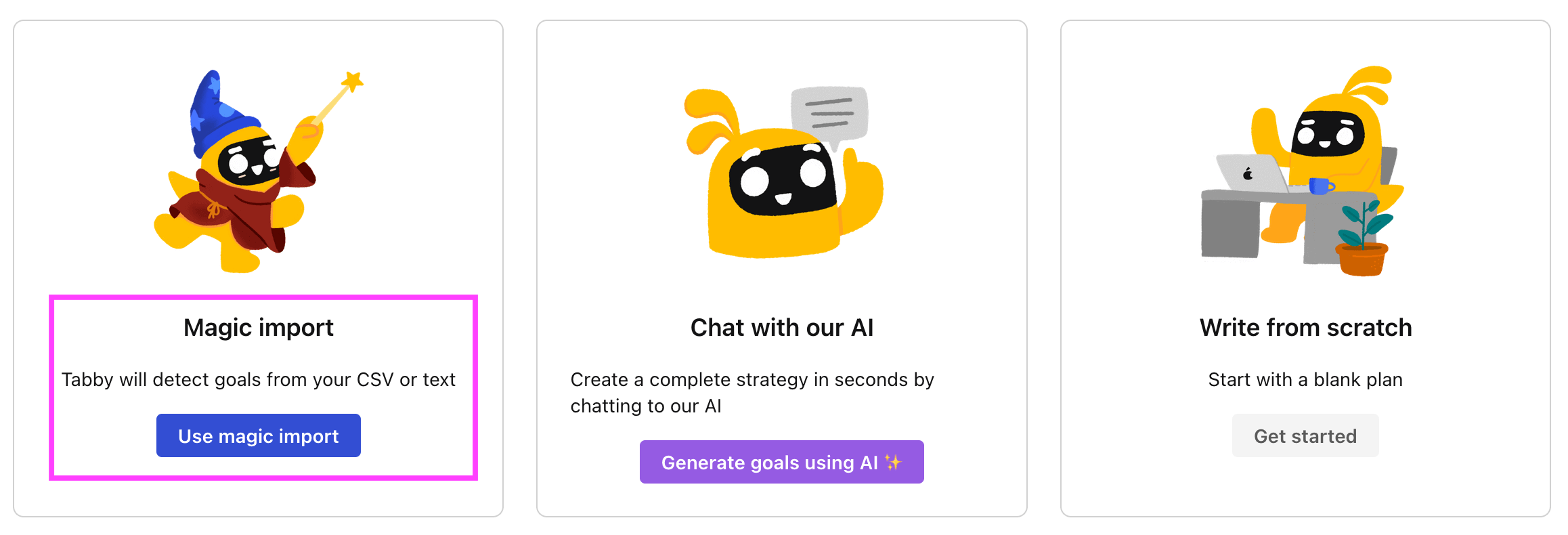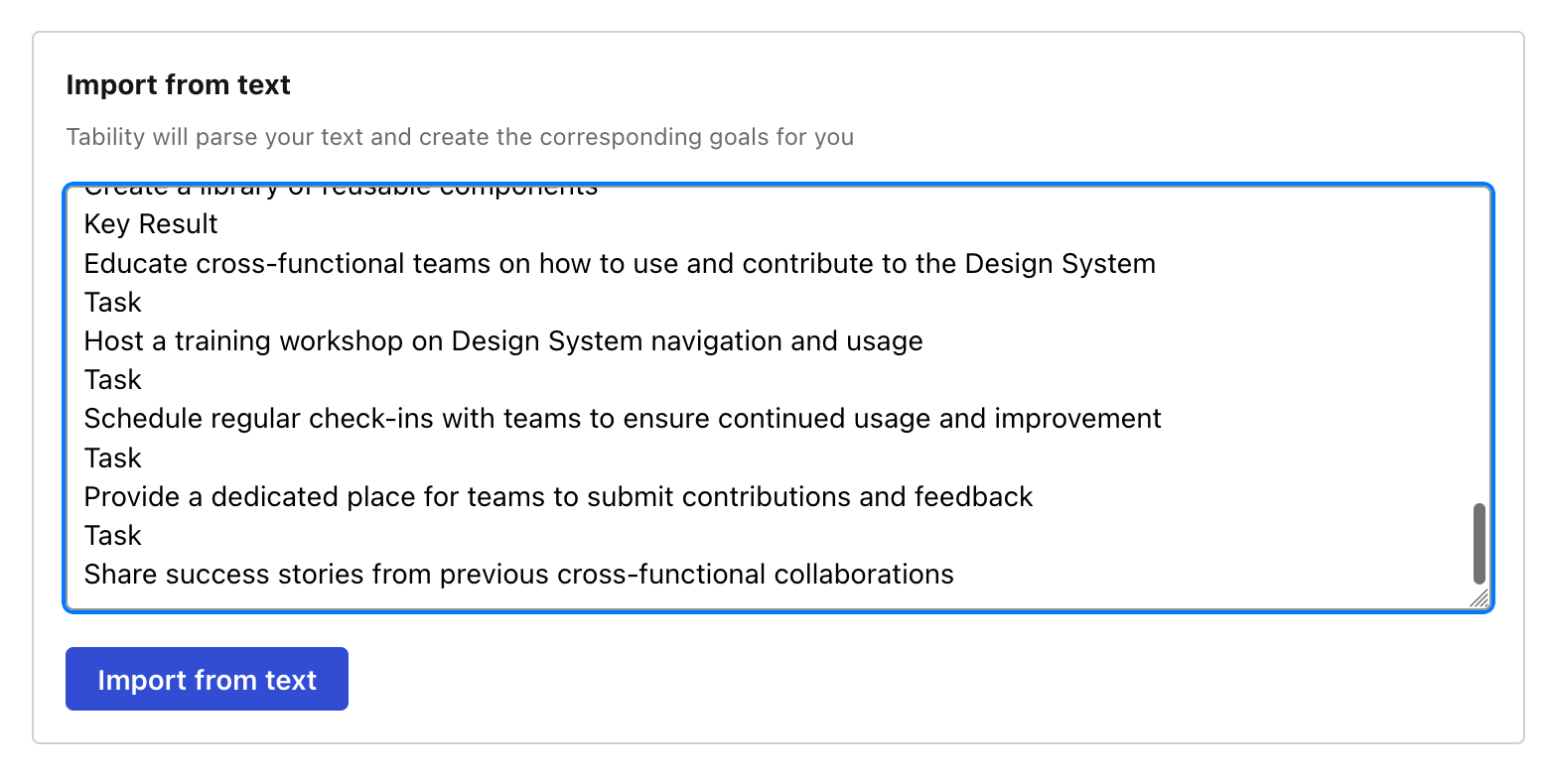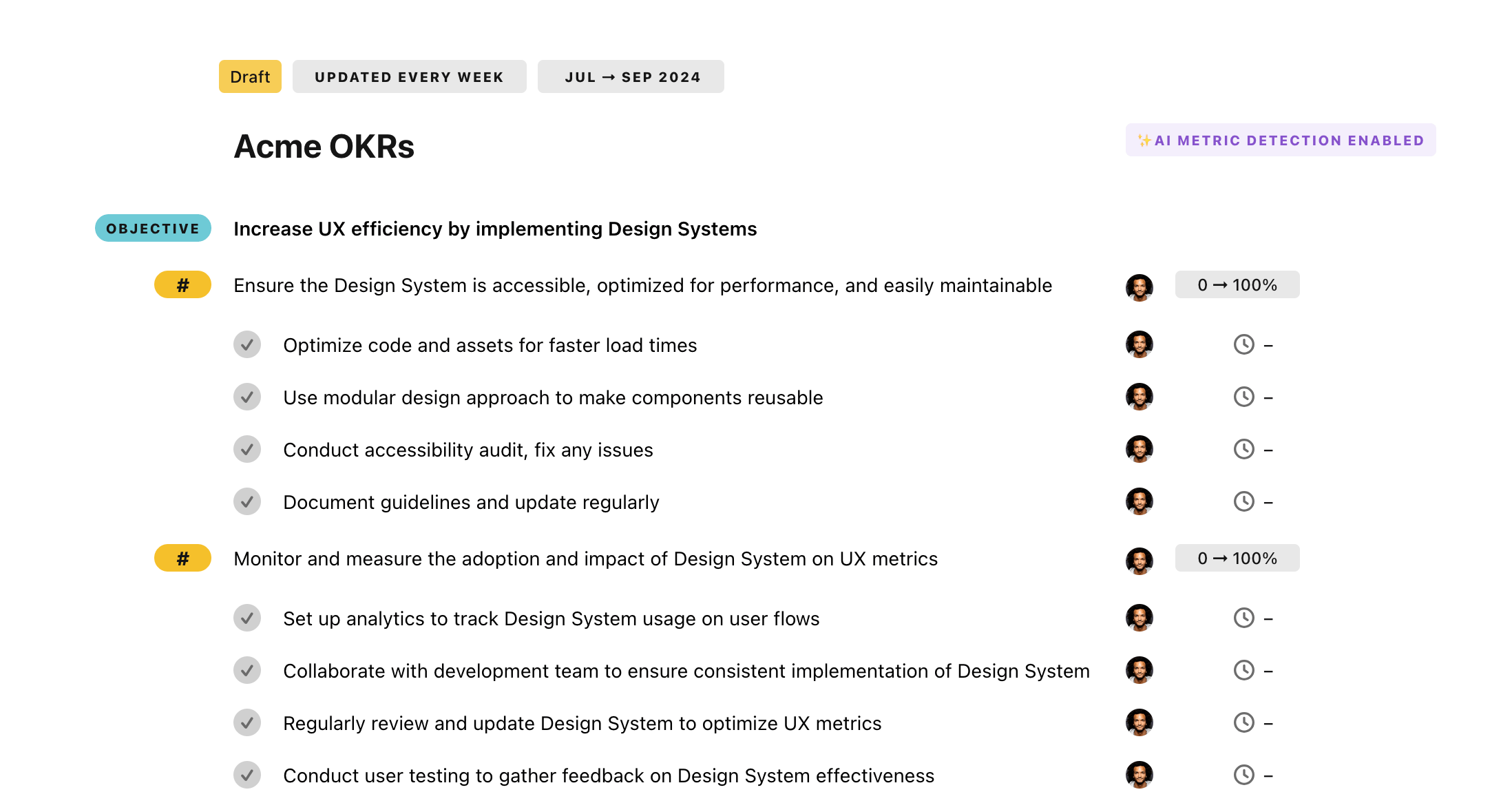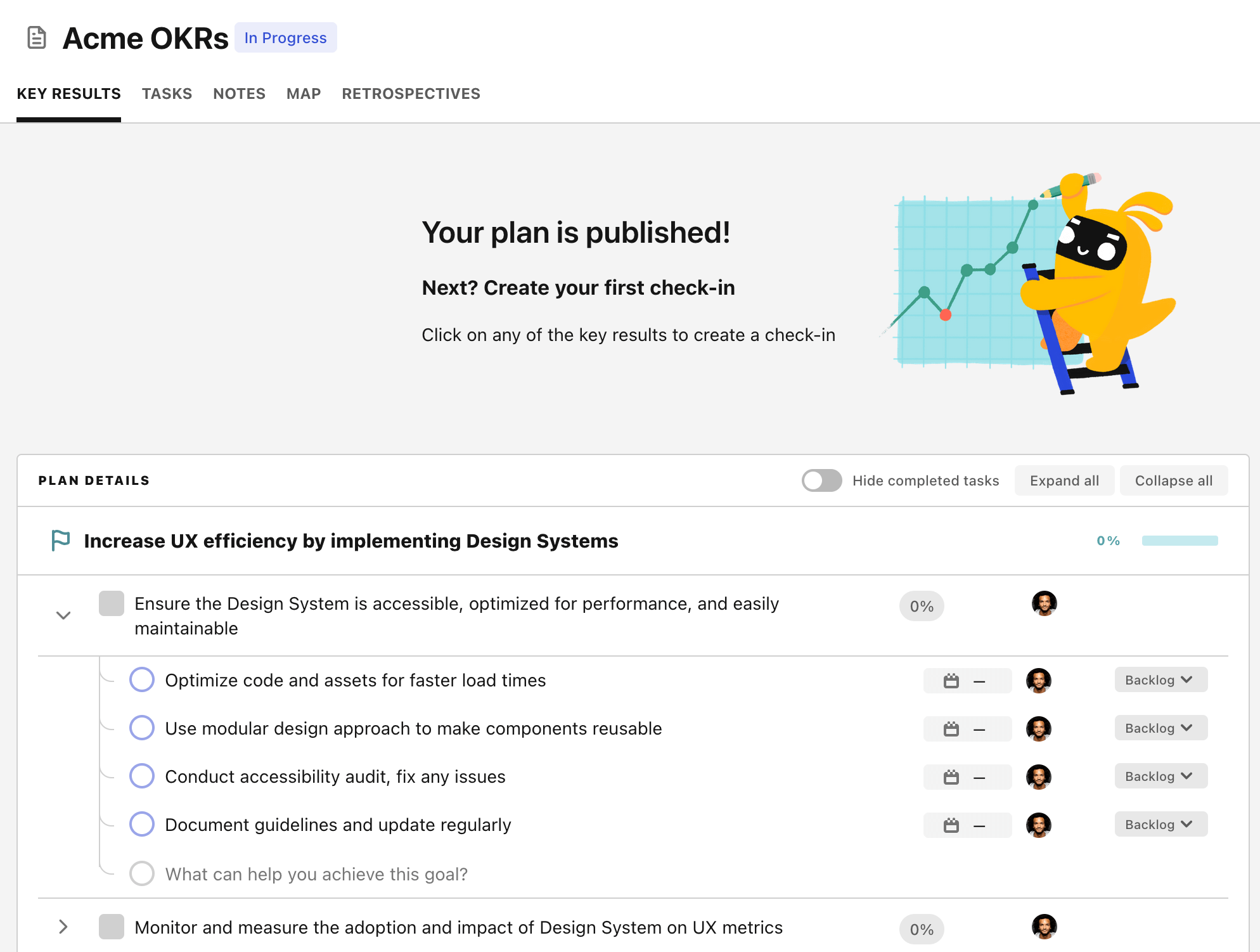OKR template to reduce Employee Turnover
Your OKR template
The second objective outlined in the OKR is to decrease employee resignations by 20%. To facilitate this reduction various initiatives have been proposed. These actions include performing exit interviews for insight, initializing an inclusive employee engagement and retention program, amplifying communication channels to reassure employees and provide professional development opportunities.
The third aim of this OKR is to stimulate overall employee engagement with an objective to witness an increment of 10%. To effectively attain this, proposals have been made to instigate systematic open communication meetings, design team-building activities, carry out anonymous employee surveys to discover improvement facets and introduce a recognition and reward program.
But the engagement doesn't end there. We also need to recognize the role of our managers hence the drive to improve their satisfaction ratings by 15%. Initiatives here include feedback sessions for understanding concerns, professional development opportunities, fostering a positive work environment, and having clear communication channels and expectations.
ObjectiveReduce Employee Turnover
KRImplement a mentoring program with participation from 75% of employees
Establish regular check-ins and evaluations to assess the effectiveness of the mentoring program
Provide training for potential mentors and match them with mentees based on their goals
Create a program outline with goals and objectives for the mentoring program
Promote the mentoring program through various communication channels to raise awareness
KRDecrease voluntary employee resignations by 20%
Conduct exit interviews to identify and address reasons for voluntary resignations
Implement a comprehensive employee engagement and retention program
Enhance communication channels to ensure employees feel valued and heard
Provide professional development opportunities to ensure employee growth and satisfaction
KRIncrease employee engagement scores by 10%
Provide regular opportunities for open communication and feedback between employees and management
Organize team-building activities to foster collaboration and strengthen relationships among employees
Conduct anonymous employee survey to identify areas of opportunity for engagement improvement
Develop and implement a recognition and rewards program to acknowledge employee efforts
KRImprove manager satisfaction ratings by 15%
Implement regular feedback sessions to understand manager concerns and address them promptly
Provide professional development opportunities to enhance manager skills and career growth
Foster a positive and supportive work environment through team-building initiatives and recognition programs
Streamline communication channels and ensure clarity in expectations for effective manager-employee interactions
How to edit and track OKRs with Tability
You'll probably want to edit the examples in this post, and Tability is the perfect tool for it.
Tability is an AI-powered platform that helps teams set better goals, monitor execution, and get help to achieve their objectives faster.
With Tability you can:
- Use AI to draft a complete set of OKRs in seconds
- Connect your OKRs and team goals to your project
- Automate reporting with integrations and built-in dashboard
Instead of having to copy the content of the OKR examples in a doc or spreadsheet, you can use Tability’s magic importer to start using any of the examples in this page.
The import process can be done in seconds, allowing you to edit OKRs directly in a platform that knows how to manage and track goals.
Step 1. Sign up for a free Tability account
Go tohttps://tability.app/signup and create your account (it's free!)
Step 2. Create a plan
Follow the steps after your onboarding to create your first plan, you should get to a page that looks like the picture below.

Step 3. Use the magic importer
Click on Use magic import to open up the Magic Import modal.
Now, go back to the OKR examples, and click on Copy on the example that you’d like to use.

Paste the content in the text import section. Don’t worry about the formatting, Tability’s AI will be able to parse it!

Now, just click on Import from text and let the magic happen.

Once your example is in the plan editor, you will be able to:
- Edit the objectives, key results, and tasks
- Click on the target 0 → 100% to set better target
- Use the tips and the AI to refine your goals
Step 4. Publish your plan
Once you’re done editing, you can publish your plan to switch to the goal-tracking mode.

From there you will have access to all the features that will help you and your team save hours with OKR reporting.
- 10+ built-in dashboards to visualise progress on your goals
- Weekly reminders, data connectors, and smart notifications
- 9 views to map OKRs to strategic projects
- Strategy map to align teams at scale